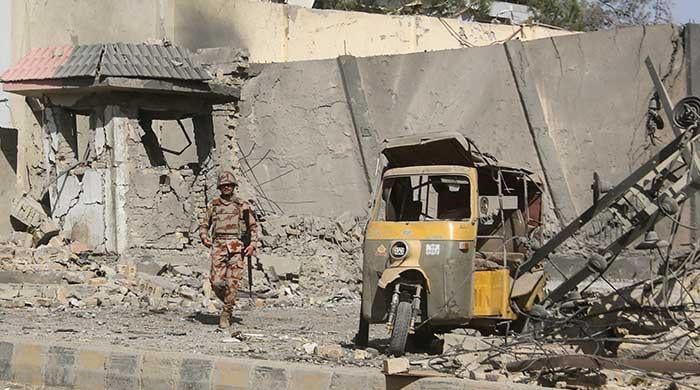
- Ongoing year witnesses 2,414 fatalities till Q3, says CRSS report.
- 57% fatalities of outlaws, 24% civilians, 18% of security personnel.
- KP, Balochistan most-affected accounting for 96% of total violence.
Amid ongoing strenuous efforts to curb the menace of terrorism, Pakistan has witnessed an alarming 46% surge in terrorism incidents in the third quarter (Q3) of 2025, as per the latest statistics issued by the Centre for Research and Security Studies (CRSS).
The country reported at least 901 fatalities and 599 injuries, including civilians, security personnel and the terrorists, in a total of 329 incidents of violence, which also included terror attacks and counter-terror operations.
The surge in terror incidents came as at least 11 people were killed in a suicide attack near Quetta’s FC headquarters on Tuesday, including two FC martyrs.
The security sources said that the blast was a suicide bombing carried out using an explosives-laden vehicle by Indian-sponsored terrorists dressed as FC personnel.
They said that a terrorist drove the vehicle into the FC headquarters, while five other terrorists attempted to storm inside the building’s premises.
However, all six terrorists, including the suicide bomber, were killed as a result of swift action by security forces, the sources said.
A day earlier, the security forces killed 13 India-sponsored terrorists in two intelligence-based operations (IBOs).
The CRSS report highlights that by Q3, the ongoing year has proven nearly as deadly as all of 2024, with 2,414 fatalities recorded compared to the entire tally of 2024, which reported 2,546 deaths in total.
The ongoing year is well on its way to surpassing last year’s death toll, with one quarter (Q4) still remaining, along with “intensification of militant violence and the expanded scale of counter-terrorism operations”.
Out of the total 901 fatalities in Q3, 516 (57%) were those of the outlaws, whereas there were 385 civilian and military martyrdoms.
Further breakdown reveals that civilian deaths stood at 219 (24%), whereas 166 (18%) security personnel embraced martyrdom.
Compared to Q2, 2025, these figures mark almost 55% more losses among outlaws (516 vs 333), over 43% among civilians (219 vs 153), and nearly 28% among security personnel (166 vs 130).
“The outlaws may have suffered the majority of fatalities recorded in this quarter; however, the civilians were the most targeted group compared to security officials and outlaws, in terms of the number of attacks and injuries suffered, i.e. almost 123 terror attacks, compared to security officials suffering around 106 and outlaws targeted in roughly 100 security operations. Moreover, they suffered 355 injuries compared to security officials suffering 209 injuries and outlaws with only 35,” the CRSS report read.
“Although security operations were three times fewer than terrorist attacks, they still resulted in nearly as many fatalities as those caused by militant violence against civilians and security forces,” it added.
Meanwhile, Khyber Pakhtunkhwa (KP) and Balochistan — both of which share a porous border with neighbouring Afghanistan — faced the brunt of the terrorism incidents, accounting for more than 96% of the total violence across the country.
KP was the worst-hit region, suffering nearly 71% (638) of the total violence-linked fatalities, and over 67% (221) of the incidents of violence, followed by Balochistan, with over 25% fatalities (230) and incidents (85).
Comparing the Q3 statistics with Q2 (616 fatalities), the report pointed out that KP and Balochistan reported the highest increase in casualties with 64% (from 390 to 638 fatalities) and 21% (from 190 to 230) surge, respectively.
Sindh also recorded an upsurge in fatalities by 162%, though the number of fatalities was low; from 8 in Q2 to 21 in Q3, 2025.
Contrastingly, the CRSS report had previously reported around 32% and 40% less violence recorded in KP and Balochistan in Q2, respectively, compared to Q1.
Accentuating the precision in the state-led counter-terrorism operations, the report says that the terrorists suffered the least number of injuries, being involved in the least number of incidents (which in their case were security forces operations), and still accounting for the majority of fatalities compared to civilians and security officials.
Discover more from Brackly News
Subscribe to get the latest posts sent to your email.



